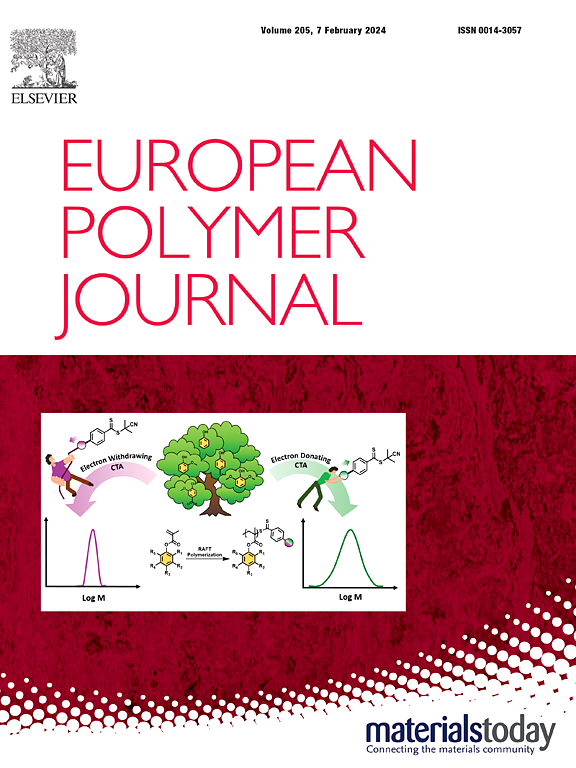Synthesis of hyperbranched polyethers with diverse structures based on “A1 + B2” ring-opening polymerization
IF 5.8
2区 化学
Q1 POLYMER SCIENCE
引用次数: 0
Abstract
The research on hyperbranched polyethers (HBPEths) currently focused on two main areas: (1) the development of a practical synthesis method and (2) the functionalization of HBPEths. “A1 + B2” ring-opening polymerization (“A1 + B2”-ROP) offers an efficient approach to access functional HBPEths with controllable structures. In the present study, a series of HBPEths were successfully prepared by employing “A1 + B2”-ROP, where the A1 and B2 represent a monofunctional primary alcohol and a biepoxy monomer, respectively. The obtained HBPEths possessed molar masses ranging from 2600 to 30000 g/mol. By employing functional A1 primary alcohol initiators, it is possible to directly introduce a single type or a mixture of functionalities including fluoride, alkyne, alkene, azide, and furfuryl groups into the HBPEths terminal structures, while by adjusting various B2 monomers with different linkage between both epoxy groups the main chain structures could be well controlled. Moreover, apart from conventional end group modification via esterification, the functionalities can be introduced during the one-pot “A1 + B2”-ROP process via ether bonds, which are stable against hydrolysis and redox-reaction.

求助全文
约1分钟内获得全文
求助全文
来源期刊

European Polymer Journal
化学-高分子科学
CiteScore
9.90
自引率
10.00%
发文量
691
审稿时长
23 days
期刊介绍:
European Polymer Journal is dedicated to publishing work on fundamental and applied polymer chemistry and macromolecular materials. The journal covers all aspects of polymer synthesis, including polymerization mechanisms and chemical functional transformations, with a focus on novel polymers and the relationships between molecular structure and polymer properties. In addition, we welcome submissions on bio-based or renewable polymers, stimuli-responsive systems and polymer bio-hybrids. European Polymer Journal also publishes research on the biomedical application of polymers, including drug delivery and regenerative medicine. The main scope is covered but not limited to the following core research areas:
Polymer synthesis and functionalization
• Novel synthetic routes for polymerization, functional modification, controlled/living polymerization and precision polymers.
Stimuli-responsive polymers
• Including shape memory and self-healing polymers.
Supramolecular polymers and self-assembly
• Molecular recognition and higher order polymer structures.
Renewable and sustainable polymers
• Bio-based, biodegradable and anti-microbial polymers and polymeric bio-nanocomposites.
Polymers at interfaces and surfaces
• Chemistry and engineering of surfaces with biological relevance, including patterning, antifouling polymers and polymers for membrane applications.
Biomedical applications and nanomedicine
• Polymers for regenerative medicine, drug delivery molecular release and gene therapy
The scope of European Polymer Journal no longer includes Polymer Physics.
 求助内容:
求助内容: 应助结果提醒方式:
应助结果提醒方式:


